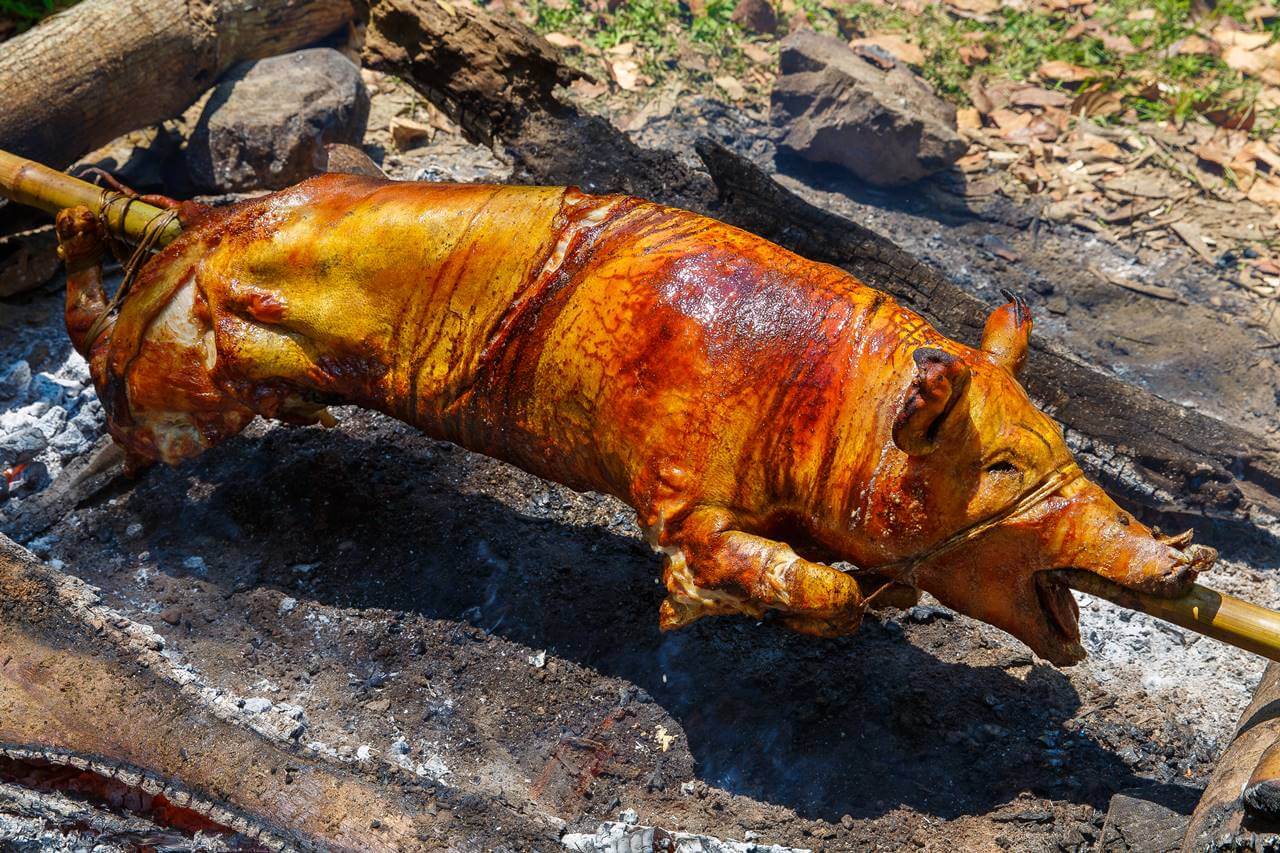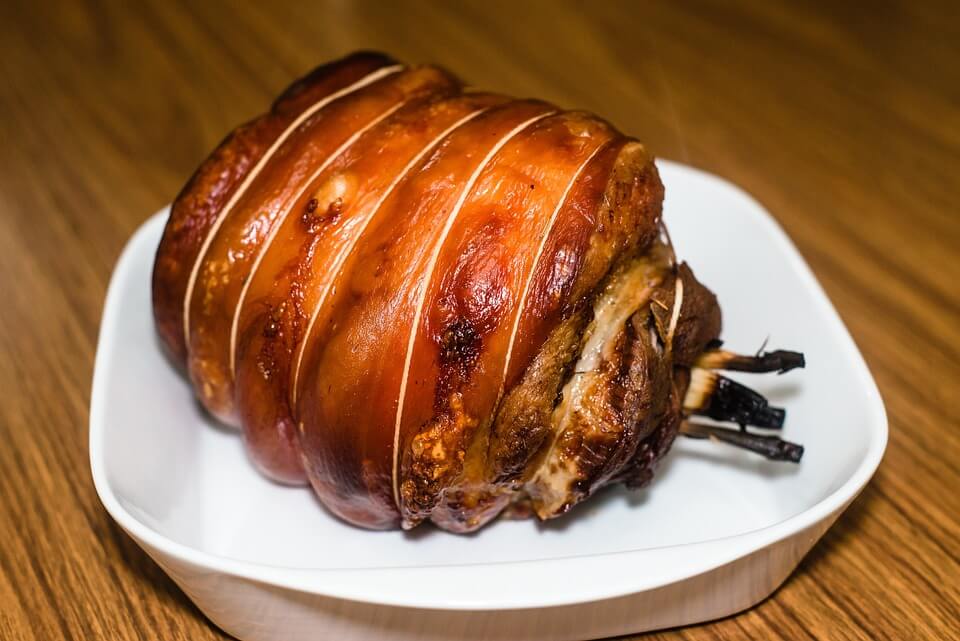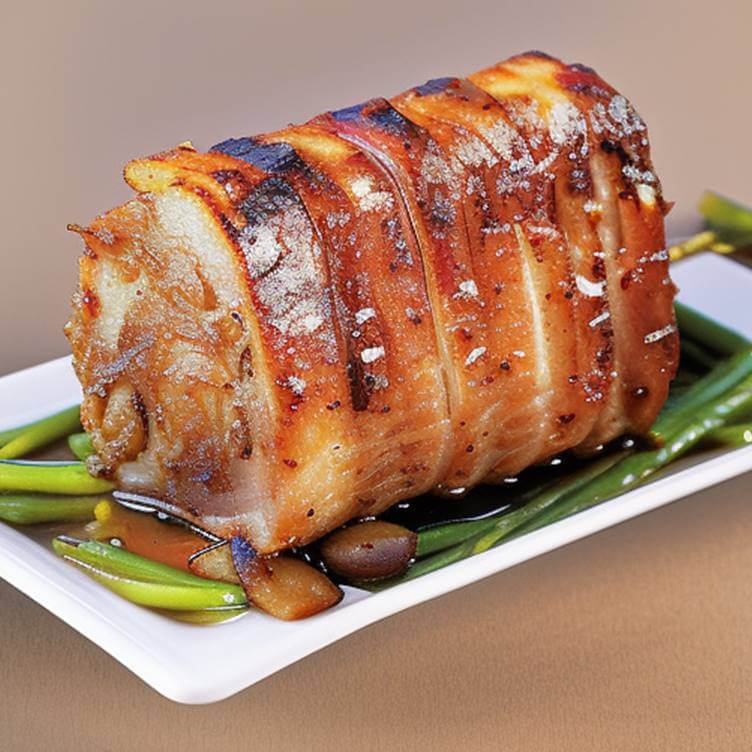According to food experts and chefs, Filipinos were already roasting pigs over an open flame before Spanish colonization. This method is known as “inasal” in Filipino culture. It’s believed that the term Lechon was given to roasted suckling pig at a later time. But among the different versions and flavors of Lechon, Cebu Lechon is one of the most popular in the Philippines.
Cebu Lechon is a slow-roasted, whole pig that has been marinated with special ingredients to achieve an unforgettable taste. Making authentic Cebu Lechon requires careful attention to detail and the right ingredients. Cebu’s Lechon is known to be exceptionally tasty without the need for some sort of sauce to enhance its flavor. This is mainly due to the special spices and herbs added to it before cooking.
Also Read: How to Cook Filipino Pork Barbecue
The process of making authentic Cebu Lechon starts with the selection of a high-quality pig. It should be clean and free from any illnesses or infections. The pig is then marinated in special herbs and spices, including garlic, lemon, onion, rosemary, bay leaves and peppercorns. This mixture will help to enhance the flavor of the meat and also preserve it.
After marinating, the pig is skewered in an upright position and then roasted over a wood fire for at least six hours or until its skin turns crispy and golden brown. During this time, it’s important to constantly monitor the cooking temperature so that it does not get too hot or burn.
The traditional ingredients used in Cebu Lechon are calamansi juice, garlic, onion, salt, pepper and annatto. The unique flavors and texture can only be achieved through careful preparation and cooking. This guide will provide you with instructions and tips on how to make an authentic Cebu Lechon.
First, choose your pig wisely. A large pig is ideal for lechon, as it is slow-roasted over an open flame. The pig should be healthy and well-fed, with no marks or wounds. Once you have selected the right pig, it’s time to marinate it with your special ingredients.

Ingredients
- 1 whole native pig (live weight 18 – 20 kg)
- Add salt and pepper to your desired flavor
- Soy sauce preferably (Camel soy sauce)
- 10-20 bundles of lemongrass
- 15 bay leaves
- 1 kg (2.2 lbs.) garlic
- 1 kg (2.2 lbs.) onion
- 2-3 cups (550-820g) salt
Steps in Preparing the Pig for Lechon
- Get the proper equipment To prevent waste or spoilage of your pork stock, investing the effort and resources to acquire the right gear is essential.
- Select the right pig the ideal hog for harvesting is a young male.
- Humanely kill the pig-For many butchers, the preferred method of dispatching hogs was to stun them using a hammer and then drain their blood. This is because shooting the animals can be quite difficult; additionally, there’s an old wives’ tale that suggests cutting into a live animal will result in tastier meat as its blood drains more efficiently.
- Scald the skin in hot water. For a more traditional approach, creating a fire in an appropriate fire pit is the ideal way to heat water. Then simply place the basin onto or over a solid grate above to ensure that the liquid is at least 150°F, although it doesn’t need to reach boiling point. Additionally, make sure that everything is securely fastened in place.
- The next step after dipping the hog is to utilize a sharp knife and scrape off all of its fine hairs. Carefully place the hog on a flat surface, grab your trusty blade, and start scraping away! The razor-sharp edge of the knife will assist you in effectively eliminating every hair from the skin.
- As some butchers may wait to remove the organs until after they have removed offal and intestines, it’s essential to take preventive measures because these parts of the animal are highly susceptible to contamination from bacteria.
- Make sure to thoroughly cleanse the cavity with water, it’s essential to give a thorough rinse using fresh and cool water.
- Once done, stuff the belly with anise, green onion leaves, crushed garlic and laurel leaves. Stack it with a bundle of lemon grass in the stomach centre. Add your salt and baste the skin of the pig with Camel soy sauce and finally Lock and secure it by stitching the belly. Stitch it well so that the ingredients will not spill out when you start to roast it.
- Skewer the pig- Put the sharp end of the skewer through the back of the animal and feed it through the inside of the animal through to the mouth. You can use galvanized wire to secure the pig so that it will not move when you rotate the pig to roast. Place the pig on top of an upright, sturdy bamboo pole over the fire slowly rotating it to ensure even cooking.
Setting up the Charcoal by Roasting the Whole Lechon
Arrange the firewood or charcoal on top of the stones in the pit in tight clusters. Get a fire going and wait for it to consume the wood and die down until only glowing coals remain. Wood coals burn at very high temperatures for a long duration. Their constant heat will roast the pig to perfection.
Keep rotating the pig to ensure that it cooks evenly and baste it with your special soy sauce every few minutes to add flavor. Roast the pig for 4 to 5 hours over hot charcoal, until the meat is tender. Occasionally, glaze the skin with the remaining soy sauce.
Make sure to also have an assistant to turn the pig several times while it’s roasting. Once done, remove from the fire and let the Lechon cool down before serving. Enjoy your delicious, authentic Cebu Lechon. Bon Appetit!
You can easily serve the Lechon with varieties of side dishes and condiments such as Mang Tomas (a sweet/sour/spicy sauce made from liver), vinegar, garlic, salt and pepper.
With these simple steps, you can now enjoy a delicious and authentic Cebu Lechon any day of the week. It’s sure to be a hit with your family and friends. Invite them over for a feast they won’t soon forget!

Frequently Asked Questions
1. How do I ensure that the meat stays tender?
Make sure to keep rotating the pig while it’s roasting and apply a basting of soy sauce every few minutes. This will help keep the moisture in and ensure that the meat remains tender. Additionally, make sure that you don’t overcook the pig or else it will dry out.
2. How can I ensure that the fire doesn’t get too hot?
When arranging your charcoal or wood, make sure to arrange it in tight clusters. This will help contain the heat and prevent your fire from getting too hot. Additionally, you can also adjust the amount of fuel as needed to control the temperature.
3. How should I serve the Lechon?
Traditionally, Lechon is served with an assortment of side dishes and condiments such as Mang Tomas (a sweet/sour/spicy sauce made from liver), vinegar, garlic, salt and pepper. You can also choose to serve it with a variety of other accompaniments, depending on your taste.
4. What other ingredients can I add to the filling?
If you want to change up the flavor, you can also add other ingredients such as diced onions, celery, carrots and herbs. You can also experiment with different seasonings and sauces to really customize the taste. Just make sure that whatever ingredients you choose will be able to withstand the long cooking time.
5. What other accompaniments can I serve with the Lechon?
You can choose to serve the Lechon with different accompaniments such as grilled vegetables, salads, and dips. The possibilities are endless! Enjoy!
6. How do I store any leftovers?
If you have any leftovers, make sure to let the Lechon cool completely before transferring it into an airtight container and storing it in the refrigerator. It should last for up to 3 days. You can also freeze it for up to 2 months if you like.

Summary
In conclusion, preparing and roasting a delicious Cebu Lechon is an art form that requires attention to detail. From selecting the right ingredients for the stuffing to ensuring even cooking over hot charcoal, there are many steps involved in making this traditional Filipino dish. By following these simple steps and tips outlined above, you can create your own succulent lechon at home with ease. Invite your family and friends over for a feast they won’t soon forget!